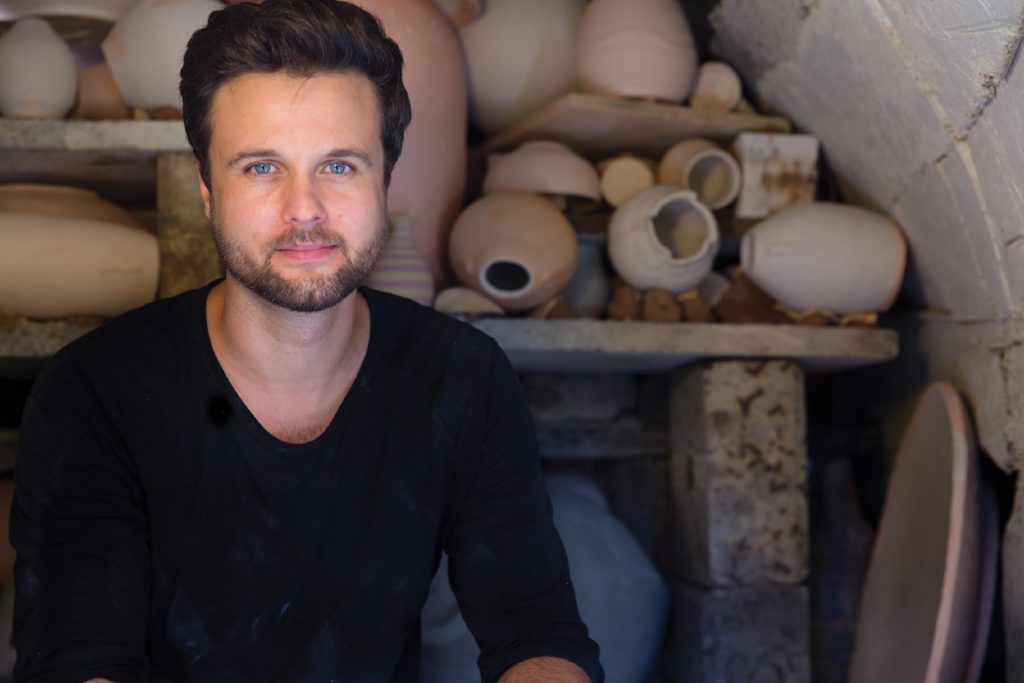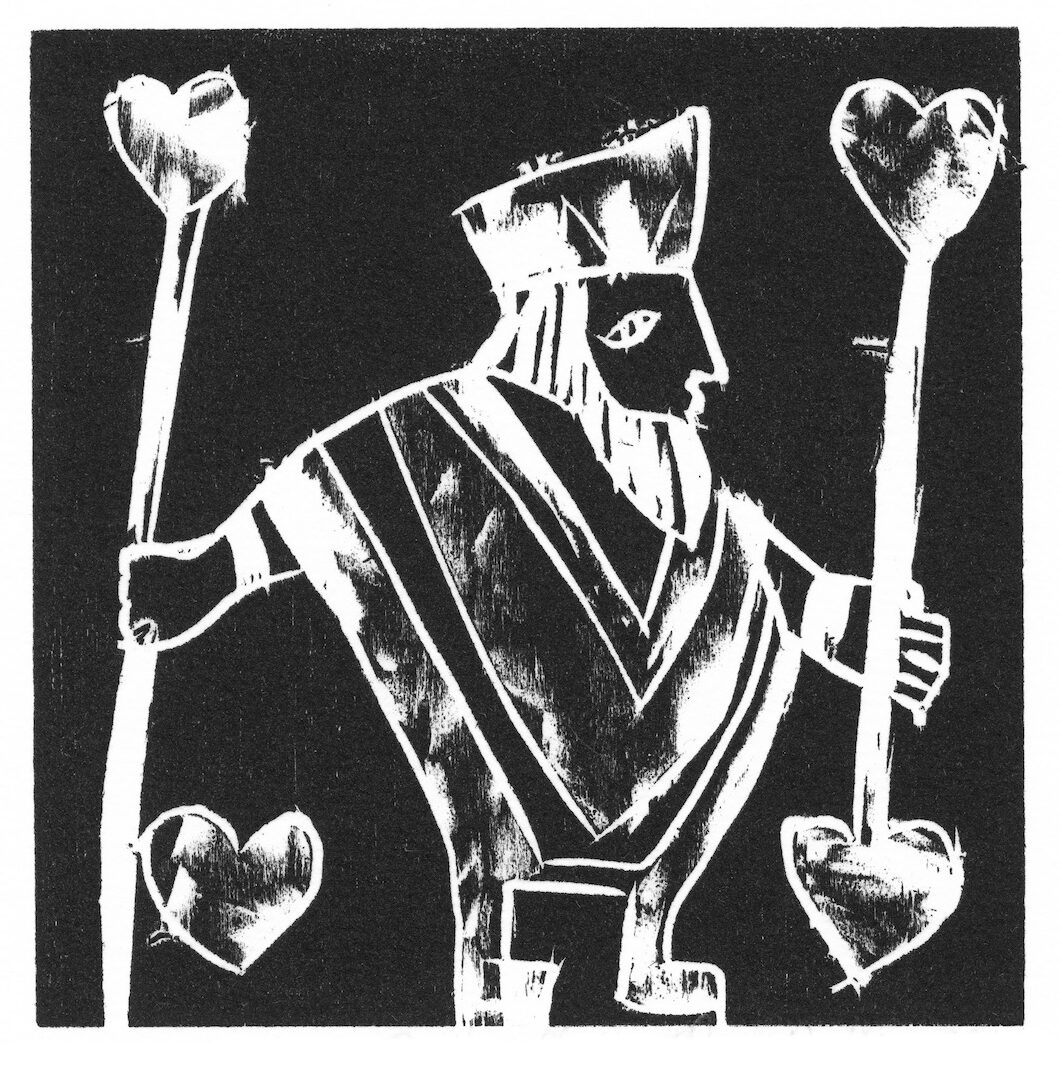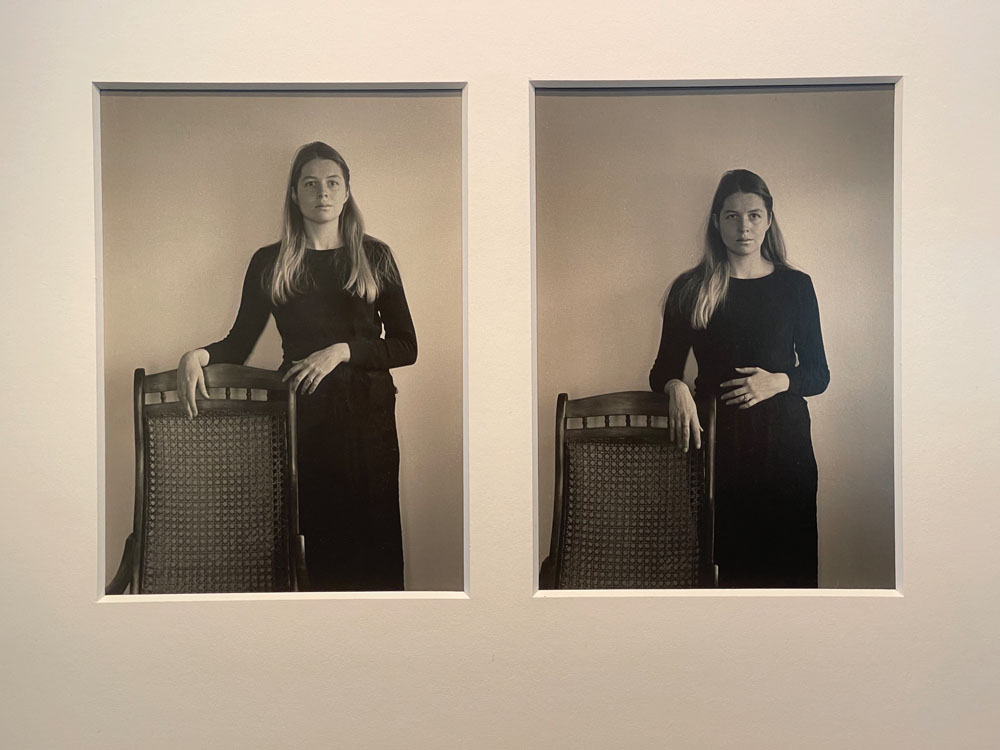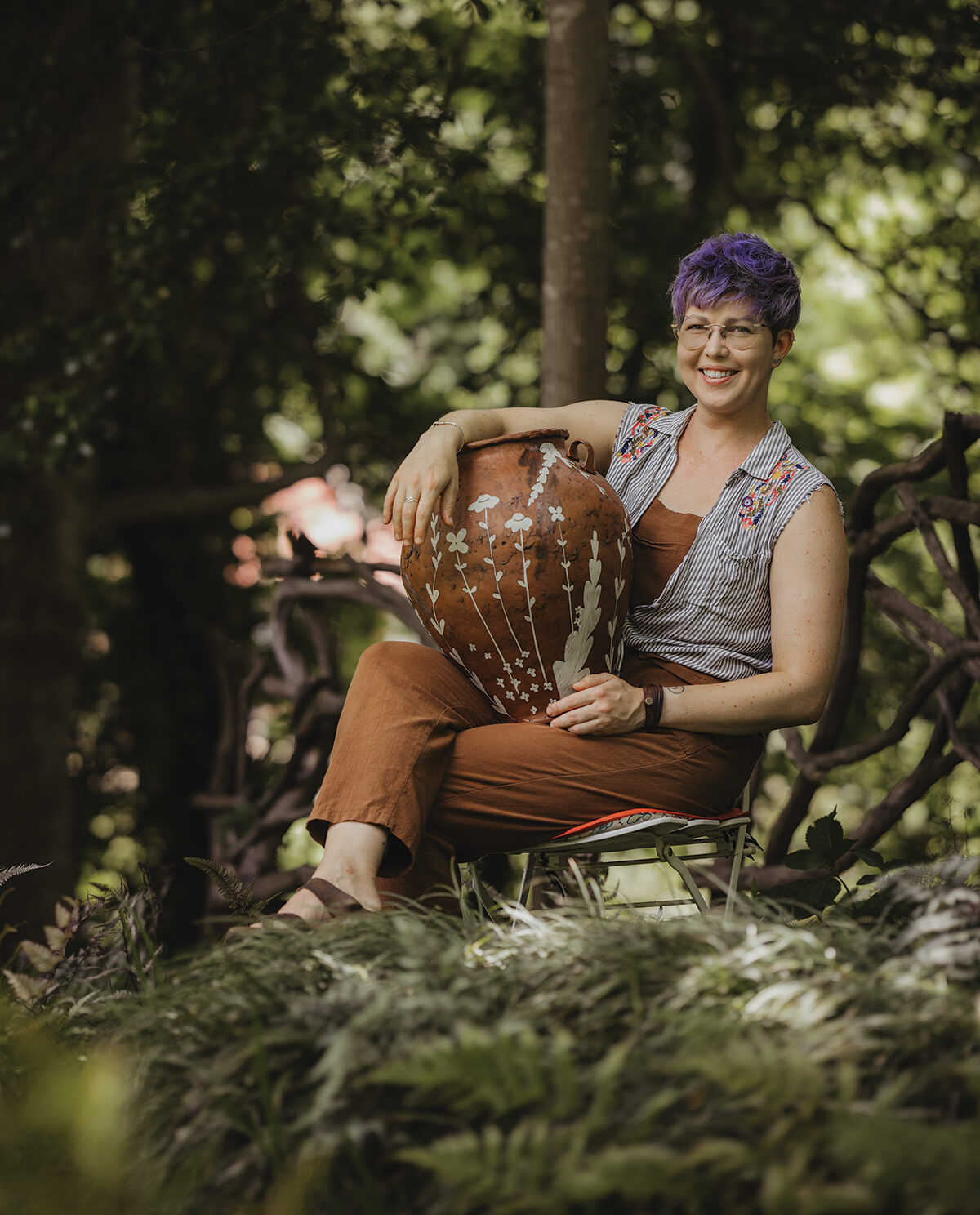
“Clay is everywhere,” declares Western North Carolina potter Josh Copus. “Finding a good source of wild clay isn’t as hard as most people think.”
But it can still be a bit of a challenge to find contemporary potters who harvest their clay the old-fashioned way.
“I had to dig these people up,” says curator Wyndy Morehead, in a winning pun, “and it wasn’t that easy.” She spent two years selecting ten potters who dig their own clay from sites close to their studios. They are featured in the new Upstairs Artspace exhibit titled “Earth to Table.” Each participant created a single table setting that showcases their individual styles and the characteristics of their wild-sourced clay. “Josh was my first contact,” Morehead says. “I met him and thought it would be a very interesting show. Then he led me to another person, and another, and brought everyone together.”
One of the potters they unearthed was Zach Sierke, who lives in Alabama, along the Gulf of Mexico. “My great-great grandfather was a jug maker here in the 1800s,” Sierke says, “and I first got into clay in college. Then I came home and went back into the woods to a creek where his kiln site used to be. I dug clay there, and it was filled with shards from pots and jugs.”
Sierke has lots of potter friends in WNC, and he and Copus taught a workshop about wild clay at Penland School of Craft.
“I’ve been digging intensely for about 20 years,” says Sierke, “and all of our clay in the entire Southeast is sediment from the Appalachians, and to some extent the Ozark Mountains. A lot of clay in Western North Carolina is very rough. You have to work hard to process it before you can take it to the potter’s wheel. But as you travel south, the size of the particulates in the clay get smaller, and it gets smoother and more workable.
“Where I live, you can go straight to the wheel with it, without any processing. The mineral deposits have been ground down and washed into what is now the Gulf Basin, where we now have this absolutely yummy clay.”

Yummy clay deserves an awesome oven, so Sierke constructed a wood-fired kiln using a medieval Japanese design called anagama, made to maximize contact with flame and ash. “In some cases,” says Sierke, “the work is decorated almost exclusively by the flame path and the molten ash deposits.”
An anagama kiln also inspires cooperative social interaction, because making it work requires assistance from many people over a period of several days. The kilns have historically been a central component of village life. Each firing of Sierke’s kiln is a major collaborative event that he feels promotes a stronger sense of intentional community and a shared connection to nature.
“You see the story of what goes on beneath our feet,” Sierke says. “You get a hands-on understanding and a bond with the forces that created the planet. You think about the people, the geology, and the alchemy going back in time.”
Upstairs Artspace (49 South Trade St., Tryon) hosts “Earth to Table” through Friday, Aug. 9. Featured potters are Josh Copus, Hadi Abbas, Jesus Minguez, Ken Sedberry, Lauren Visokay, Matt Jones, Michael Mahan, Rachel Clark, Shawn Ireland and Zach Sierke. www.upstairsartspace.org. 828-859-2828. “Zach Sierke Pottery” on Facebook and Instagram.



